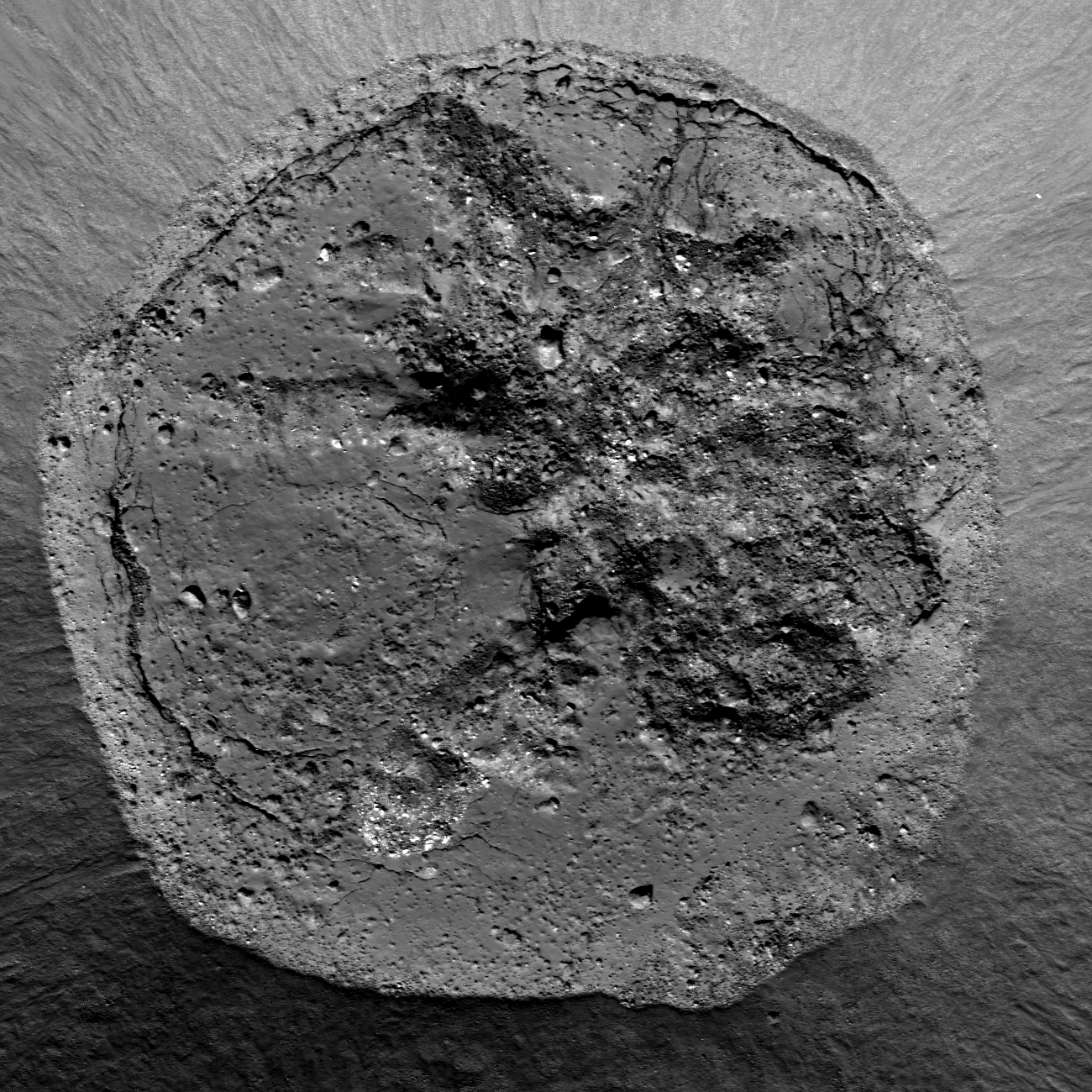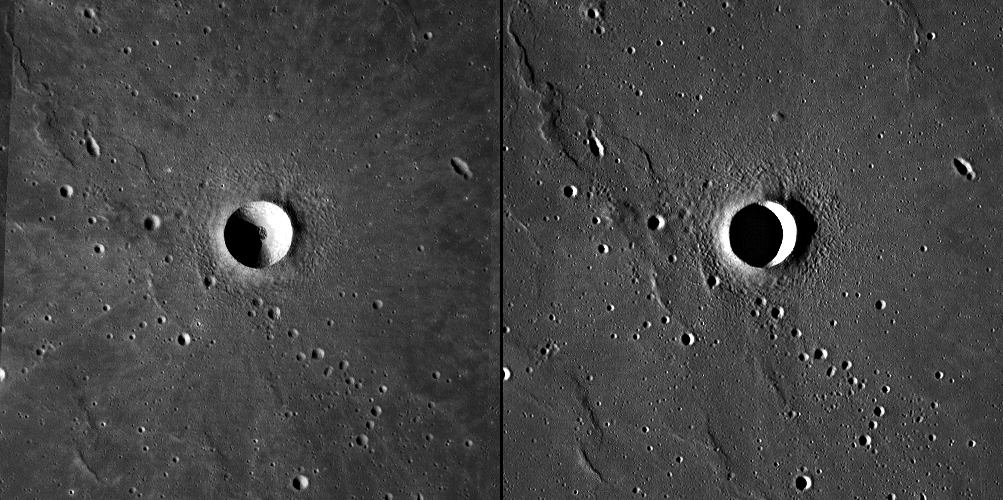
Imagine a quiet afternoon on the lunar surface about 1 billion years ago. Suddenly, the ground shakes due to the shockwave from a nearby impact. You see rock and dust burst away from the ground on ballistic trajectories, and some large chunks of material contain so much energy from the impact, they are glowing with heat. Some of the molten rock splashes outside the rim, but most remains on the floor of the newly formed crater, creating an impact melt deposit.
The crater Rümker E (38.620°N, 302.881°E) is a simple Copernican-aged crater with a diameter of 6.96 km. Impact melt in the crater floor is fresh with common features such as fractures, boulders, and mounds. The fractures are mostly located around the edges of the impact melt deposit and formed either as the impact melt cooled, or after cooling during the stage of crater modification due to stresses in the crater floor. Over time the granular material falling down the crater walls will slowly cover more and more of the impact melt deposit, decreasing its diameter. Compositionally the impact melt is a combination of the rocks present in the target material. In this case, the target material is mostly mare basalt.
Explore the entire NAC frame!
Check out these previous posts for more examples of beautiful impact melt features:
Published by Sarah Braden on 8 March 2013
